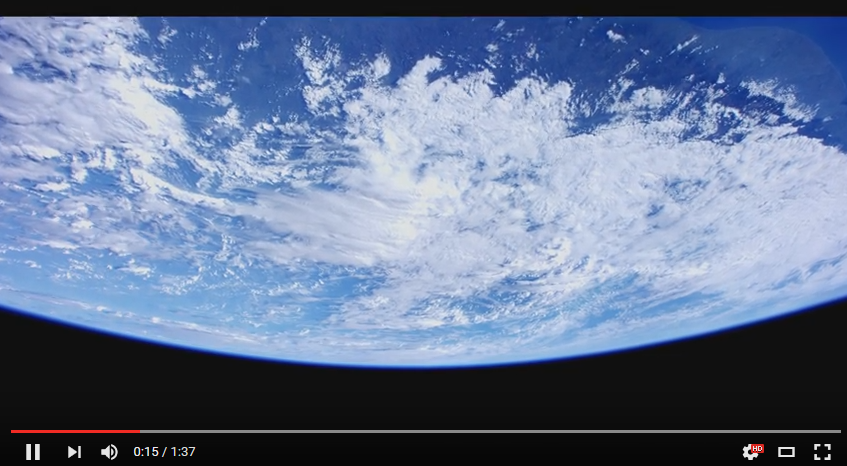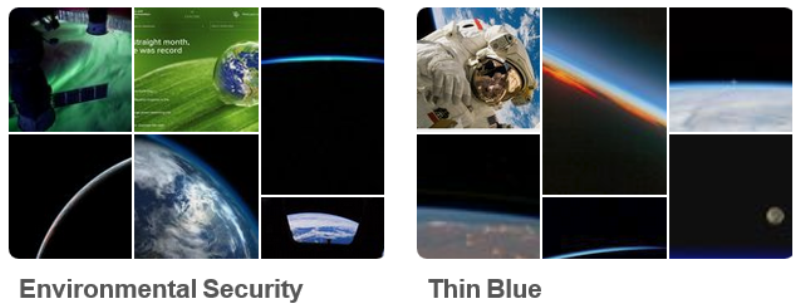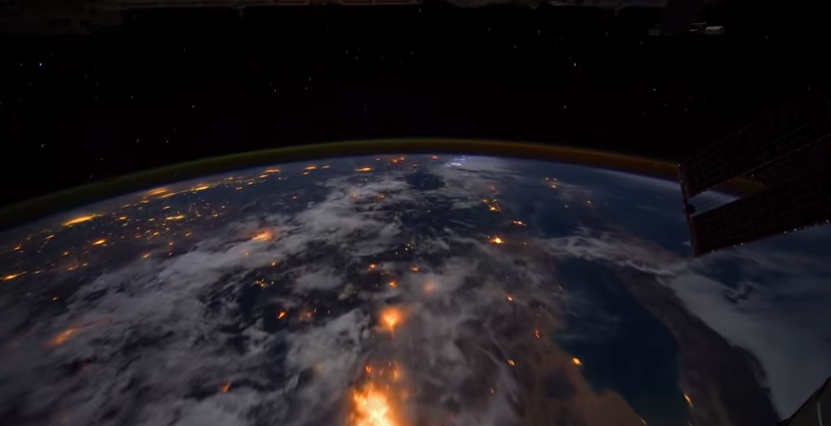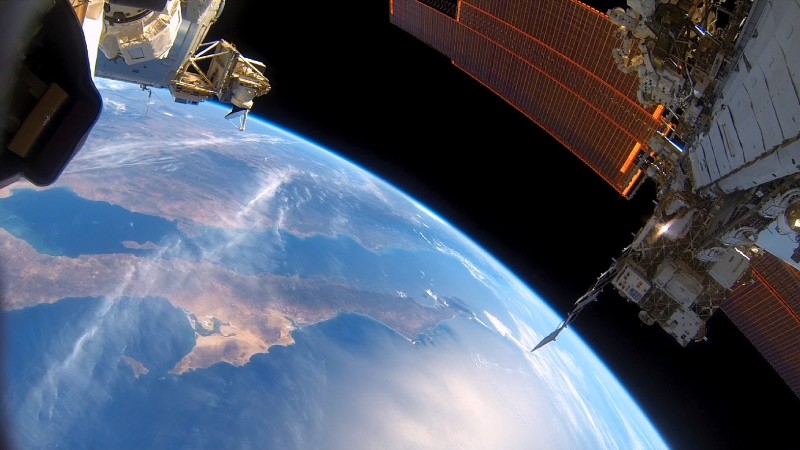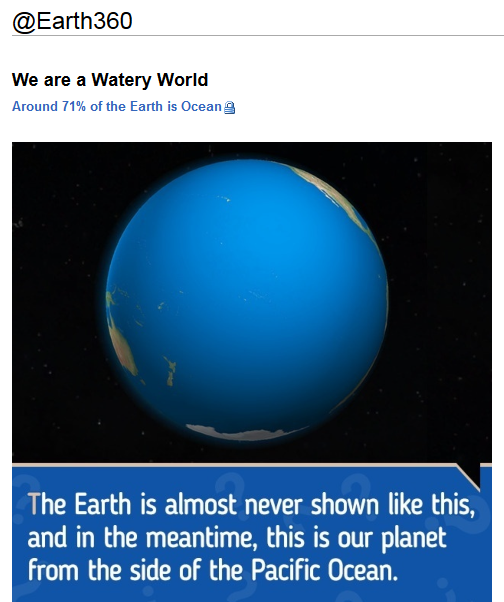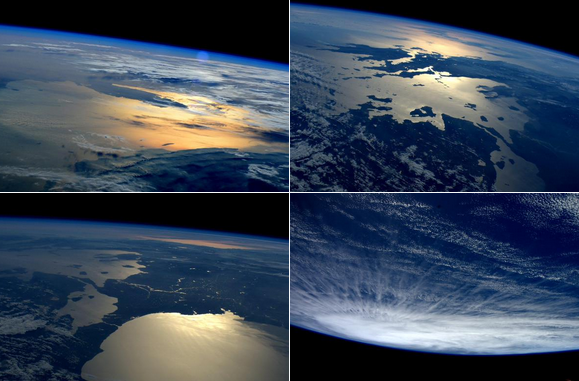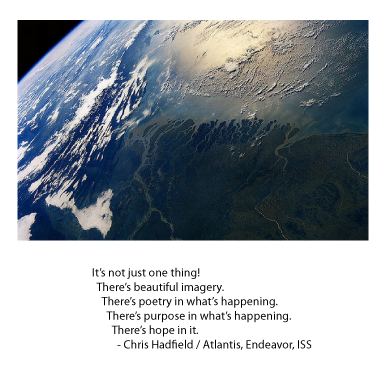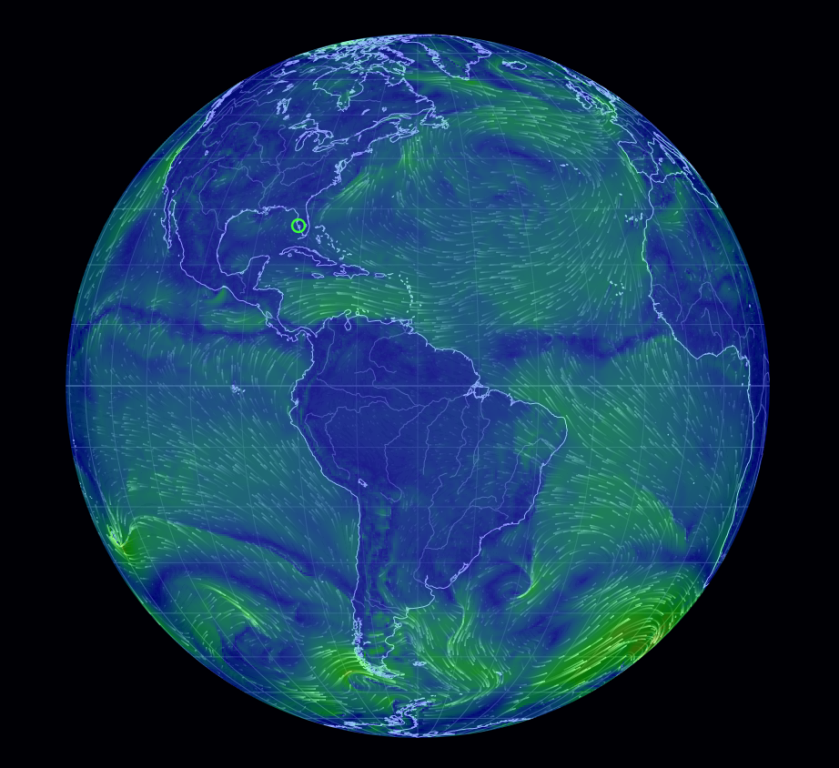HelloEarth: Difference between revisions
Siterunner (talk | contribs) No edit summary |
Siterunner (talk | contribs) No edit summary |
||
| (19 intermediate revisions by the same user not shown) | |||
| Line 1: | Line 1: | ||
<big><big>'''''Our Home Planet... '''''</big></big> | |||
[[File:Earth | [[File:Earth 2016 4k.png|link=https://www.youtube.com/embed/oFDeNcu3mnc]] | ||
[https://www.youtube.com/embed/oFDeNcu3mnc ''View Full Screen''] | |||
| Line 28: | Line 16: | ||
<big>'''DSCOVR: Watching Us from a Million Miles Way'''</big> | <big>'''DSCOVR: Watching Us from a Million Miles Way'''</big> | ||
GreenPolicy360 works alongside NASA's DSCOVR Mission | |||
In 2015 GreenPolicy360 assisted NASA managers in releasing the first tranche of photos from the newly launched DSCOVR:EPIC satellite mission. It was truly big picture time, daily full-earth, multi-band images taken from a Lagrange point 1 (L1) in orbit, a million miles from planet Earth. As [http://www.planetcitizens.org '''planet citizens'''] along for the ride, we were joyful ! | |||
In 2022, many of the same DSCOVR:EPIC NASA team from launch to operational green light are still at work on the Whole Earth mission. Here's to [https://www.greenpolicy360.net/w/Category:Earth_Science '''Earth Science'''] and [https://www.greenpolicy360.net/w/Earth_Science_Research_from_Space '''Earth Science Research from Space'''] | In 2022, many of the same DSCOVR:EPIC NASA team from launch to operational green light are still at work on the Whole Earth mission. Here's to [https://www.greenpolicy360.net/w/Category:Earth_Science '''Earth Science'''] and [https://www.greenpolicy360.net/w/Earth_Science_Research_from_Space '''Earth Science Research from Space'''] | ||
| Line 41: | Line 31: | ||
* https://www.nasa.gov/content/goddard/noaas-dscovr-to-provide-epic-views-of-earth/ | * https://www.nasa.gov/content/goddard/noaas-dscovr-to-provide-epic-views-of-earth/ | ||
>One of the DSCOVR Earth-scanning instruments, called EPIC for Earth Polychromatic Imaging Camera, images the Earth in one picture, something that hasn't been done before from a satellite. EPIC also provides valuable atmospheric data. Currently, to get an entire Earth view, scientists have to piece together images from satellites in orbit. With the launch of the National Oceanic and Atmospheric Administration's (NOAA) DSCOVR and EPIC instrument, scientists will get pictures of the entire sunlit side of Earth. To get this unique view, EPIC orbits the first sun-Earth '''Lagrange point (L1), 1 million miles from Earth'''. At this location, four times further than the orbit of the Moon, the gravitational pull of the sun and Earth cancel out providing a stable orbit for DSCOVR. Most other Earth-observing satellites circle the planet within 22,300 miles. | |||
[http://www.planetcitizen.org <big>''As 'Planet Citizens', Helping NASA Was a Blast!''</big>] | |||
<big><big>'''''Delivered Daily: "Blue Marble" Images from the DSCOVR Mission'''''</big></big> | |||
:*'''''[https://www.youtube.com/watch?v=CFrP6QfbC2g&feature=youtu.be Million-mile Views of Our Home Planet]''''' | :*'''''[https://www.youtube.com/watch?v=CFrP6QfbC2g&feature=youtu.be Million-mile Views of Our Home Planet]''''' | ||
:[[File:One year of Earth from DSCOVR.png|link=https://www.youtube.com/watch?v=CFrP6QfbC2g&feature=youtu.be]] | :[[File:One year of Earth from DSCOVR.png|link=https://www.youtube.com/watch?v=CFrP6QfbC2g&feature=youtu.be]] | ||
<big>'''''New Era of Whole Earth Images'''''</big> | ::<big><big>'''''DSCOVR GOES LIVE: HELLO EARTH'''''</big></big> | ||
::<big>'''''New Era of Whole Earth Images'''''</big> | |||
::[http://epic.gsfc.nasa.gov/ '''''"A million mile view of the home planet - Delivered Daily'''''] | |||
:::[[File:DSCOVR-EPIC ImagingofPlanetEarth.png|link=http://www.greenpolicy360.net/mw/images/DSCOVR_looks_back_at_earth_from_a_million_miles_away.jpg]] | |||
| |||
| Line 93: | Line 92: | ||
[[File:Beautiful Planet imax m.jpg]] | [[File:Beautiful Planet imax m.jpg]] | ||
| | ||
:[[File:Earth - Pacific Ocean.png]] | |||
[ | :: [https://twitter.com/dscovr_epic/status/1539847357990305792 <big>'''Over the Pacific Ocean'''</big>] | ||
::: [https://www.greenpolicy360.net/w/File:Earth_-_Pacific_Ocean.png '''Hello Planet Earth, we are watery!'''] | |||
:::: * https://twitter.com/dscovr_epic/status/1539847357990305792/photo/1 | |||
:::::[[File:Astronaut Samantha June 10 2015.png|link=https://twitter.com/AstroSamantha/status/608536948970524674/photo/1]] | :::::[[File:Astronaut Samantha June 10 2015.png|link=https://twitter.com/AstroSamantha/status/608536948970524674/photo/1]] | ||
| Line 122: | Line 120: | ||
| | ||
🌎 | |||
<big><big>'''''Being & Becoming Planet Citizens'''''</big></big> | <big><big>'''''Being & Becoming Planet Citizens'''''</big></big> | ||
| Line 297: | Line 297: | ||
<big>'''''"Greening Our [http://www.greenpolicy360.net/w/File:Blue_Marble_photo_-_Apollo_17.jpg Blue Planet"''''']</big> | <big>'''''"Greening Our [http://www.greenpolicy360.net/w/File:Blue_Marble_photo_-_Apollo_17.jpg Blue Planet"''''']</big> | ||
[[File:Day before Earth Day-m April 21, 2015.png]] | |||
Latest revision as of 19:18, 5 May 2023
Our Home Planet...
🌎
DSCOVR: Watching Us from a Million Miles Way
GreenPolicy360 works alongside NASA's DSCOVR Mission
In 2015 GreenPolicy360 assisted NASA managers in releasing the first tranche of photos from the newly launched DSCOVR:EPIC satellite mission. It was truly big picture time, daily full-earth, multi-band images taken from a Lagrange point 1 (L1) in orbit, a million miles from planet Earth. As planet citizens along for the ride, we were joyful !
In 2022, many of the same DSCOVR:EPIC NASA team from launch to operational green light are still at work on the Whole Earth mission. Here's to Earth Science and Earth Science Research from Space
>The NOAA Deep Space Climate Observatory (DSCOVR) spacecraft was launched on February 11, 2015, and in June 2015 achieved its orbit at the first Lagrange point or L1, 1.5 million km from Earth towards the Sun. There are two NASA Earth observing instruments onboard: the Earth Polychromatic Imaging Camera (EPIC) and the National Institute of Standards and Technology Advanced Radiometer (NISTAR). The purpose of this paper is to describe various capabilities of the DSCOVR/EPIC instrument. EPIC views the entire sunlit Earth from sunrise to sunset at the backscattering direction (scattering angles between 168.5° and 175.5°) with 10 narrowband filters: 317, 325, 340, 388, 443, 552, 680, 688, 764 and 779 nm. We discuss a number of pre-processingsteps necessary for EPIC calibration including the geolocation algorithm and the radiometric calibration for each wavelength channel in terms of EPIC counts/second for conversion to reflectance units. The principal EPIC products are total ozone O3amount, scene reflectivity, erythemal irradiance, UV aerosol properties, sulfur dioxide SO2 for volcanic eruptions, surface spectral reflectance, vegetation properties, and cloud products including cloud height. Finally, we describe the observation of horizontally oriented ice crystals in clouds and the unexpected
>NASA has contributed two Earth science instruments for NOAA's space weather observing satellite called the Deep Space Climate Observatory or DSCOVR, launched in January 2015.
>One of the DSCOVR Earth-scanning instruments, called EPIC for Earth Polychromatic Imaging Camera, images the Earth in one picture, something that hasn't been done before from a satellite. EPIC also provides valuable atmospheric data. Currently, to get an entire Earth view, scientists have to piece together images from satellites in orbit. With the launch of the National Oceanic and Atmospheric Administration's (NOAA) DSCOVR and EPIC instrument, scientists will get pictures of the entire sunlit side of Earth. To get this unique view, EPIC orbits the first sun-Earth Lagrange point (L1), 1 million miles from Earth. At this location, four times further than the orbit of the Moon, the gravitational pull of the sun and Earth cancel out providing a stable orbit for DSCOVR. Most other Earth-observing satellites circle the planet within 22,300 miles.
As 'Planet Citizens', Helping NASA Was a Blast!
Delivered Daily: "Blue Marble" Images from the DSCOVR Mission
- DSCOVR GOES LIVE: HELLO EARTH
- New Era of Whole Earth Images
🌎
All Alone in the Night
GreenPolicy360's Favorite Planet Earth Music Video
All Alone in the Night on the International Space Station
Music by Two Steps: Freedom Fighters / Remix
- Samantha Cristoforetti has breakfast espresso & says #HelloEarth to our home planet
🌎
Being & Becoming Planet Citizens
- Earth360
- EarthPOV
- Overview Effect/Orbital Perspective
- "Thin Blue"
"The Commons", Strategic Demands, Environmental Security
- Environmental Security, Global Security
- Climate News
-- #Earth360 #EarthPOV #EarthObservations
-- #OverviewEffect #OverviewInstitute #SpaceshipEarth
-- #OrbitalPerspective #GlobalPerspective #FragileOasis
-- #Astronauts #ISS #InternationalSpaceStation #SpaceExploration
-- #PlanetCitzen #HumanEvolution #CognitiveShift #Change of #WorldView
- ·······················································································
- 51+ Million Views as of 2022
·················································
- #Earth360: An Overview
Envisioning New Ways of Protecting Life
With appreciation ~ for the space experience and the wisdom of the 'Overview Effect'
Overview / Planetary --- Planetary, March 2015
Watching Home From Above
The View Outside My Window / Video
![]() Settings Suggestion: FULL Screen, 1080p (Adjust the cog in the corner of the video player), Room lights off, Music up, lean back and fly
Settings Suggestion: FULL Screen, 1080p (Adjust the cog in the corner of the video player), Room lights off, Music up, lean back and fly
![]() Set Video Quality on Theater Mode or FULL Screen 1080p, lights off, Audio up. Even better, adjust YouTube player setting for HighDef 4K, 2160p
Set Video Quality on Theater Mode or FULL Screen 1080p, lights off, Audio up. Even better, adjust YouTube player setting for HighDef 4K, 2160p
··································
Astronaut Alex Gerst: A 'Planet Citizen's' view of Earth...
![]() Set Video Quality on Theater Mode or FULL Screen HD 4K, 2160p
Set Video Quality on Theater Mode or FULL Screen HD 4K, 2160p
·································
December 1972
... first photograph ever snapped by a human being of the whole round Earth
································
December 1968
"Apollo 8's Point of View on December 24, 1968
... Humankind's first 'live vision' of our Whole Earth as the Apollo astronauts orbit the moon...
Suddenly and surprisingly, as they looked out their window, the Earth began to rise...
They moved from the mission command list they were following and hurried to get their cameras...
When the Planet Citizen voyagers returned home, their mission's unplanned photo... Earthrise
forevermore changed how we view ourselves and how we view our home planet
····················
"Greening Our Blue Planet"
○
- About Us
- Additional Website Resources - Linked Data - Green Best Practices
- Atmospheric Science
- Biosphere
- Digital Citizen
- EarthPOV
- Earth360
- Planet Citizen
- Earth
- Earth Observations
- Earth Science
- Earth System Science
- Eco-Spirituality
- Ecology Studies
- Environmental Protection
- Environmental Security
- EOS eco Operating System
- Global Security
- Green Politics
- Green Values
- NASA
- Nature
- Overview Effect
- Strategic Demands
- ThinBlueLayer
- Whole Earth
